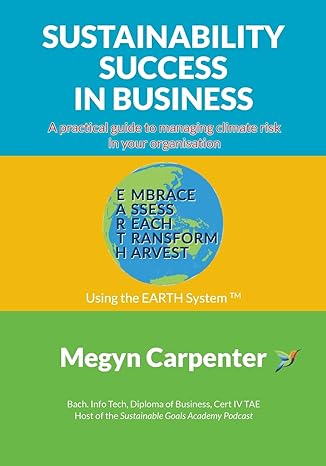Question
Shirley is in the 35 percent bracket and is comparing a 4 percent corporate bond to a 3 percent municipal bond. Which should Shirley buy
Shirley is in the 35 percent bracket and is comparing a 4 percent corporate bond to a 3 percent municipal bond. Which should Shirley buy and why?
a.She should buy the corporate bond because it has a higher interest rate.
b.She should buy the municipal bond because it pays an equivalent yield on a taxable bond of 4.62 percent compared to the corporate bond of 4 percent.
c.She should buy the corporate bond because it has an after-tax return of 6.15 percent.
d.None of these listed items are correct.
To the annuity holder, which of the following is true regarding annuity payments?
a.Annuity payments are similar to life insurance proceeds in that they are excluded from gross income.
b.Annuity payments are revised any time the life expectancy of the annuitant changes.
c.Annuity payments are in part a return of the original purchase price and in part taxable income.
d.Annuity payments are first considered to be a tax-free return of the original purchase price.
e.Annuity payments are fully includable in gross income.
Marjorie is single, over 65, and receives the following income: tax-exempt interest from municipal bonds of $5,000; regular interest and dividends of $7,500; pension from City of New York of $75,000; and Social Security benefits of $15,000. How much of her Social Security income is taxable?
a.$3,750
b.$12,750
c.$7,500
d.$15,000
Generally speaking, which of the following is true regarding interest on U.S. savings bonds, Series EE and Series I, is:
a.It is taxed at preferential rates.
b.It is not included in gross income.
c.It is taxed annually with no election.
d.It is taxed when the bonds are cashed in.
Which of the following describes a difference between a Section 529 Plan and an Educational Savings Account?
a.An Educational Savings Account income exclusion for distributions may be available in the same year as an education credit is claimed, but not if distributions from a Section 529 Plan are also taken.
b.The maximum annual contribution to an Educational Savings Account is $2,000 which is phased out for high-income individuals. The contributions to a Section 529 Plan may be larger than $2,000 and are not phased out for high-income individuals.
c.Distributions from Section 529 Plans are non-taxable if used for qualified education expenses. The Educational Savings Account distribution is taxable on the earnings portion of the distribution even if used for qualified education expenses.
d.The contributions to a Section 529 Plan are not deductible while contributions to an Educational Savings Account are deductible.
On July 1, 2019, Steven retires from work and starts to draw on his pension annuity. His payment is $2,000 a month and he is paid for 6 months. During his employment years, he contributed $30,000 and his employer contributed $20,000 towards the annuity. His age at retirement is 67. What is Steven's exclusion in 2019?
a.$857.16
b.$12,000.00
c.$142.86
d.$1,500.00
Step by Step Solution
There are 3 Steps involved in it
Step: 1

Get Instant Access to Expert-Tailored Solutions
See step-by-step solutions with expert insights and AI powered tools for academic success
Step: 2

Step: 3

Ace Your Homework with AI
Get the answers you need in no time with our AI-driven, step-by-step assistance
Get Started


